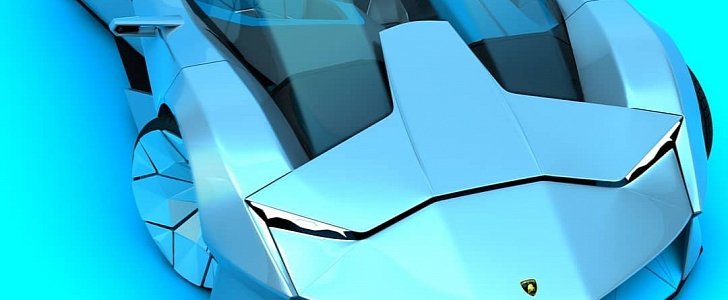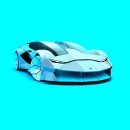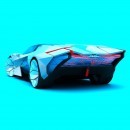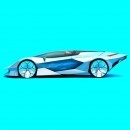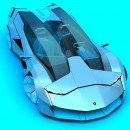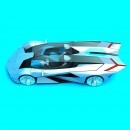It's clear that Lamborghini is making steps towards electrification, with concepts like the Asterion (hybrid) and the Terzo Milennio (EV based on supercapacitors), as well as the limited-production Sian (hybrid, also relying on supercapacitors) easily proving this. But what if Sant'Agata Bolognese decided to enter the fuel cell arena?
Truth be told, the odds of such a venture are rather slim, due to the limitations of the hydrogen power technology, at least in its current form (more on this below). Nevertheless, with Lamborghini being a brand that features dreaming as a core value, I've brought along a set of renderings showcasing such a proposal.
Dubbed Lamborghini Idrogeno (this is obviously Italian for the universe's most abundant element), this unofficial concept comes from a pair of artists, namely MichaB Engelbert Kurlej and Akshay Prakash. However, the project was completed together with the Raging Bull at the Scuola Politecnica di Design. Note that the latter, which is based in Milan, can be referred to as the first post-graduate school for design disciplines in Italy, since it was founded back in 1954.
The traditional Lambo styling cues dominate the front end, but the angular styling of the various elements that make up the profile of the vehicle, as well as its overall silhouette also fit the said description.
In fact, the separated driver and passenger areas remind us of the Lamborghini Gallardo Concept S introduced in 2006. As for the rear end, the complex lighting signature, with its futuristic look, speaks of the vehicle's advanced tech side.
One of the greatest drawbacks of the current technology revolves around the economic burden placed on consumers. So while battery electric vehicles (BEVs) compensate for the greater price (compared to internal combustion models) by helping their drivers save money thanks to the lower cost of electricity vs gas, this isn't true for the fuel tank EVs that are fuel cell vehicles.
However, there's still hope for advances in science and technology to allow for a reduction of the hydrogen harvesting cost.
As for other problems, such as the risk of fuel tanks exploding on impact or the lack of charging infrastructure, these could be solved by making efforts similar to those that help the BEV market grow nowadays.
Dubbed Lamborghini Idrogeno (this is obviously Italian for the universe's most abundant element), this unofficial concept comes from a pair of artists, namely MichaB Engelbert Kurlej and Akshay Prakash. However, the project was completed together with the Raging Bull at the Scuola Politecnica di Design. Note that the latter, which is based in Milan, can be referred to as the first post-graduate school for design disciplines in Italy, since it was founded back in 1954.
The traditional Lambo styling cues dominate the front end, but the angular styling of the various elements that make up the profile of the vehicle, as well as its overall silhouette also fit the said description.
In fact, the separated driver and passenger areas remind us of the Lamborghini Gallardo Concept S introduced in 2006. As for the rear end, the complex lighting signature, with its futuristic look, speaks of the vehicle's advanced tech side.
So, what's holding the fuel cell vehicle market back?
If you're looking for a hydrogen-powered vehicle right now, you'll only get to choose between the Toyota Mirai, the Honda Clarity Fuel Cell and the Hyundai NEXO.One of the greatest drawbacks of the current technology revolves around the economic burden placed on consumers. So while battery electric vehicles (BEVs) compensate for the greater price (compared to internal combustion models) by helping their drivers save money thanks to the lower cost of electricity vs gas, this isn't true for the fuel tank EVs that are fuel cell vehicles.
However, there's still hope for advances in science and technology to allow for a reduction of the hydrogen harvesting cost.
As for other problems, such as the risk of fuel tanks exploding on impact or the lack of charging infrastructure, these could be solved by making efforts similar to those that help the BEV market grow nowadays.
